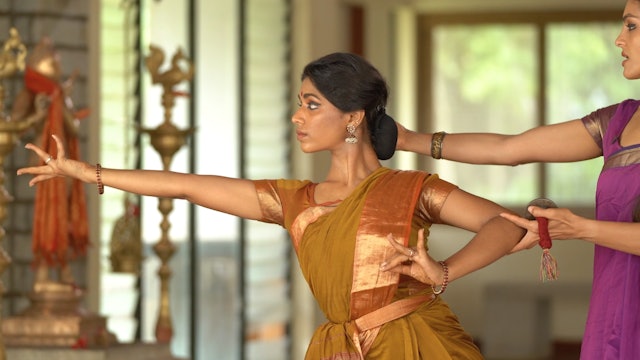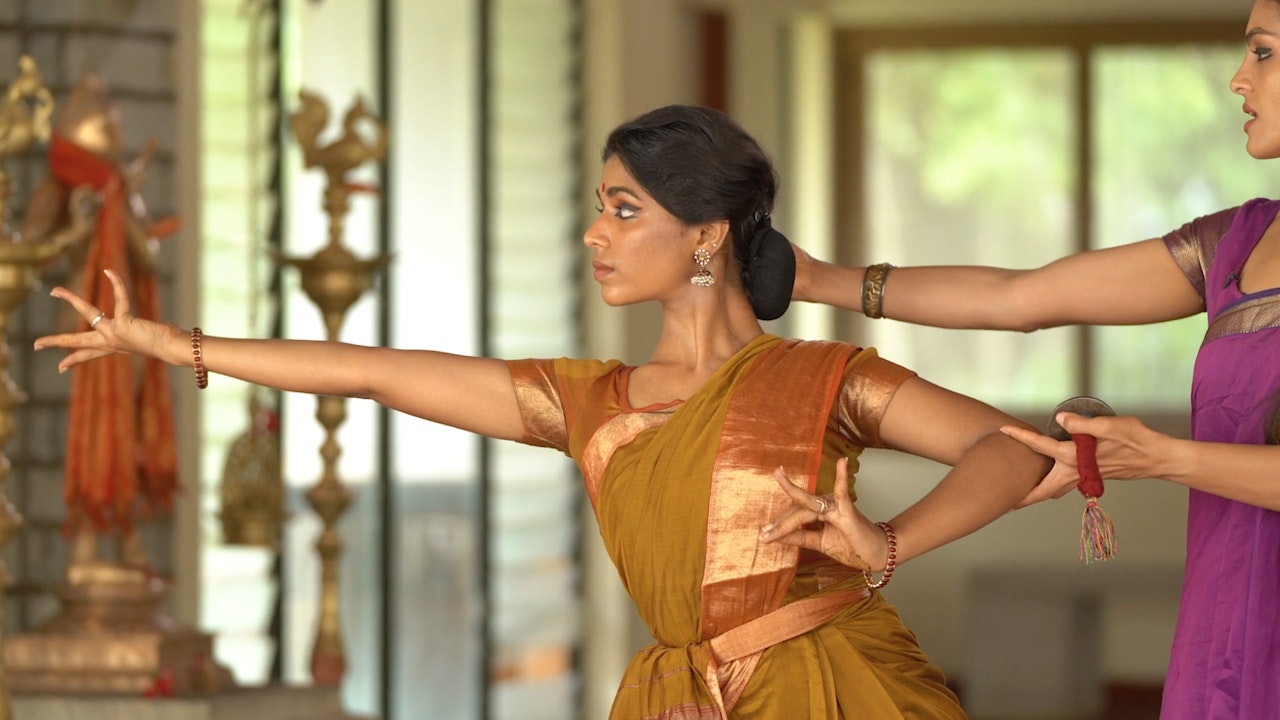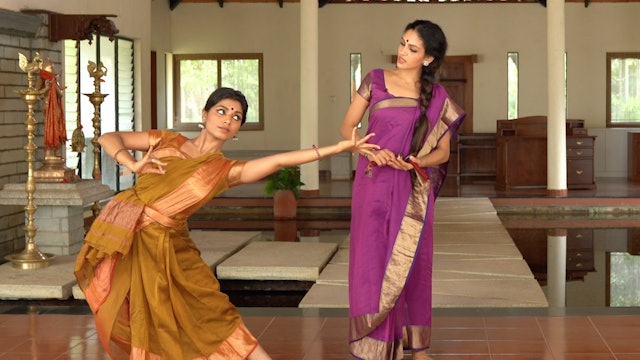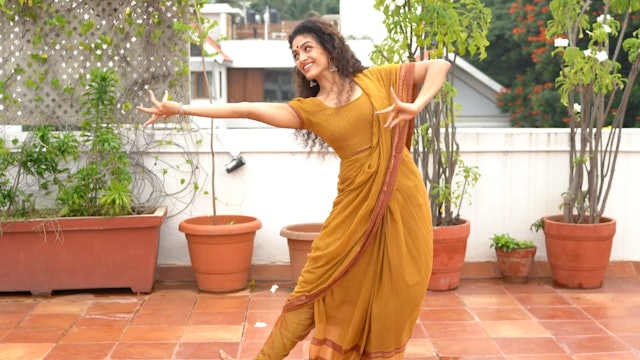Adavus : Instructions
3 Seasons
Adavus are the essentials of the practice of Bharatanatyam. They are the basic unit of movement They can be compared to words of a vocabulary. Adavus are a combination of Abhinaya hastas, Sthanakas and feet articulation with the floor, causing movement. They have a beginning and an end and extensively use the Araimandi and Muzhumandi positions in combination with the Aalidam, Pratyalidam and Vaishaka Sthanas.
We recommend that the student watches the instructions for the Aduvus, before commencing the practice of each Adavu set for at least a period of 5 to 6 months.
-
Bramari adavu: Instructions
Bramari literally means to turn. The first Bramari adavu is introduced in the second set of Adavus, the other varieties will be introduced subsequently. It is important to keep the eyes focussed at a particular point and turn the head faster than the body.
Things to keep in mind:
- When stretchi... -
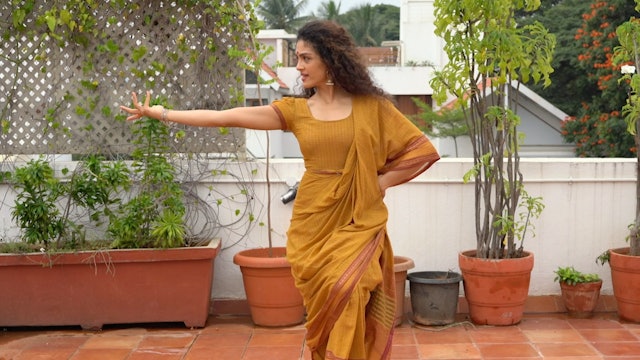 05:44Episode 2
05:44Episode 2Bramari adavu 2/3/4 : Instructions
Episode 2
Bramari literally means to turn. The second/ third Bramari adavu that we practise in the Raadha Kalpa method introduces, quarter, half and full turns.
These turns are used in choreography to change direction with precision.
Things to keep in mind:
- The lengthening of the bent knee and the turn... -
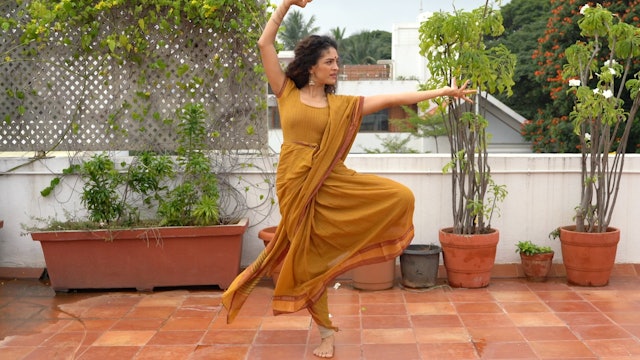 01:46Episode 11
01:46Episode 11Bramari adavu 5 : Instructions
Episode 11
Bramari literally means to turn. The fifth Bramari adavu that we practise in the Raadha Kalpa method introduces full turns while changing the technique of the turn.
The arm movement is like the first Bramari Adavu, and the leg movement incorporates a swivel.
This Adavu is usually not done in v...
-
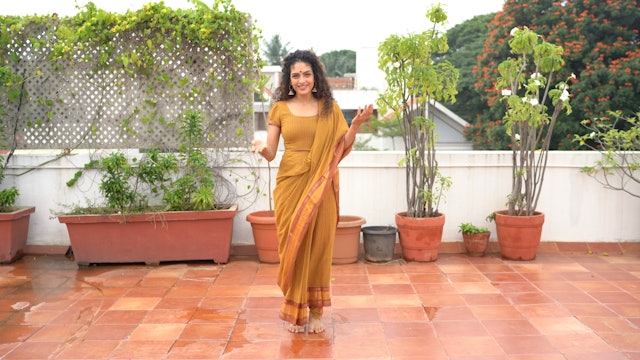 09:50Episode 3
09:50Episode 3Jaar Adavu variations: Instructions
Episode 3
'Jaaru', literally means, to slide. This is also called the Sarikal Adavu. In the RK Method, we refer to the standing series that end in Samapada as the Jaar Adavu series and the other sliding Adavus that use Muzhumandi, and Aalidam as Sarikal adavus for simplicity.
This Adavu incorporates the s...
-
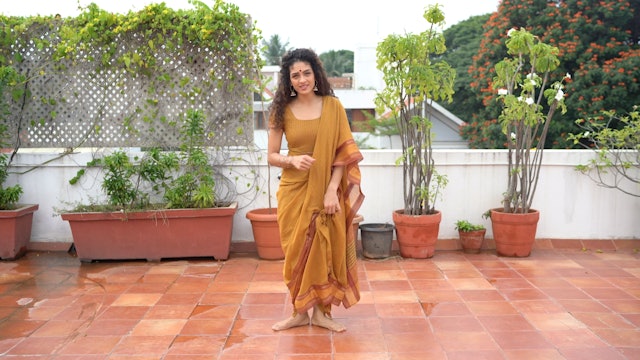 02:22Episode 4
02:22Episode 4Thattu Mettadavu: Instructions
Episode 4
The instructions explain how to do the Thattu Mettadavus with accuracy and clarity of movement.
Make certain to do the Araimandi series to increase strength in the legs. Also practise hip-openers and squats.
-
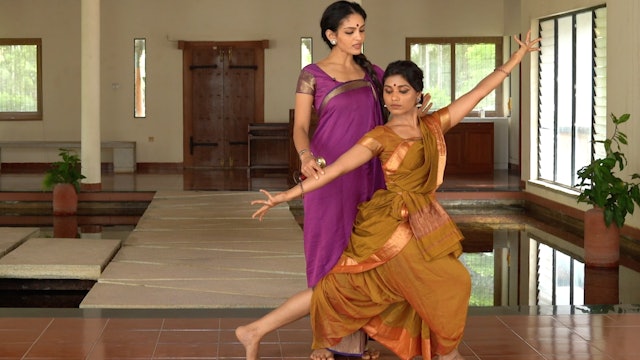 05:00Episode 5
05:00Episode 5Korwe Adavu 1: Instructions
Episode 5
The Korwe adavu is a combination of previously introduced foot and body articulations. It is called a Korvey adavu as it cannot be placed into any specific category. It has a Tattu, naatu, Bramari, Serikal amongst other movements. Some Korwe adavus also use a Kudittam in the feet.
Things to keep...
-
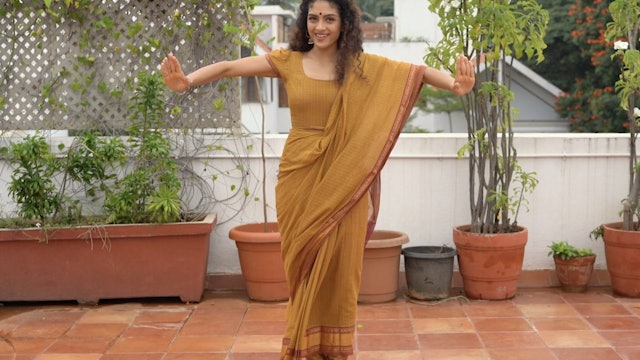 02:46Episode 6
02:46Episode 6Korwe Adavu 2: Instructions
Episode 6
The Korwe adavu is a combination of previously introduced foot and body articulations. It is called a Korvey adavu as it cannot be placed into any specific category. It has a Tattu, naatu, Bramari, Serikal amongst other movements. Some Korwe adavus also use a Kudittam in the feet.
Things to keep...
-
Korwe Adavu (utplavana 1 ) : Instructions
Episode 7
The Korwe adavu is a combination of previously introduced foot and body articulations. It is called a Korvey adavu as it cannot be placed into any specific category. It has a Tattu, naatu, Bramari, Serikal amongst other movements. Some Korwe adavus also use a Kudittam in the feet.
Things to keep...
-
Korwe Adavu (utplavana 2 ) : Instructions
Episode 8
The Korwe adavu is a combination of previously introduced foot and body articulations. It is called a Korvey adavu as it cannot be placed into any specific category. It has a Tattu, naatu, Bramari, Serikal amongst other movements. Some Korwe adavus also use a Kudittam in the feet.
Things to keep...
-
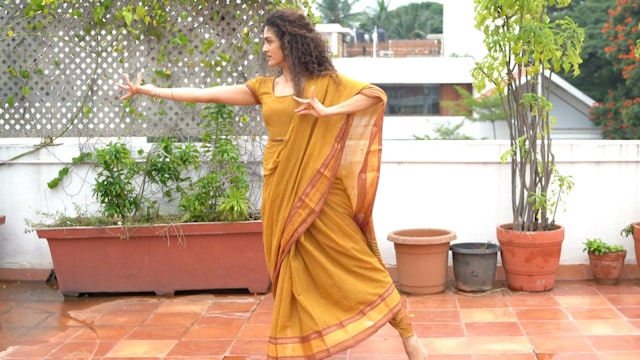 03:47Episode 12
03:47Episode 12Korwe Adavu (utplavana 3 ) : Instructions
Episode 12
The Korwe adavu is a combination of previously introduced foot and body articulations. It is called a Korvey adavu as it cannot be placed into any specific category. It has a Tattu, naatu, Bramari, Serikal amongst other movements. Some Korwe adavus also use a Kudittam in the feet.
Things to keep...
-
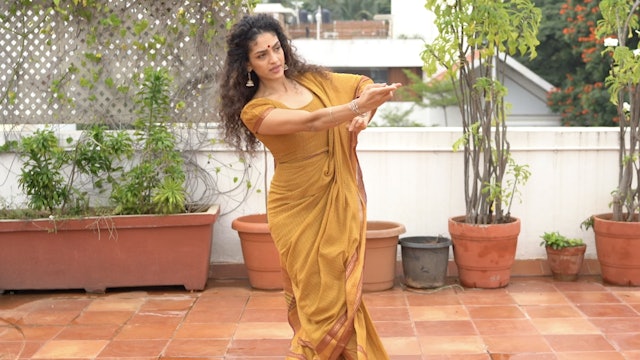 07:23Episode 9
07:23Episode 9Kartharee adavu 2/3: Instructions
Episode 9
The Kartharee adavu is a movement that begins with a jump, followed by the crossing of the legs. The name could come from the hasta that is used or from the fact that the legs cross.
The bends of the bodies vary in the various types of Kartharee adavu. We usually practice this Adavu to a three c...
-
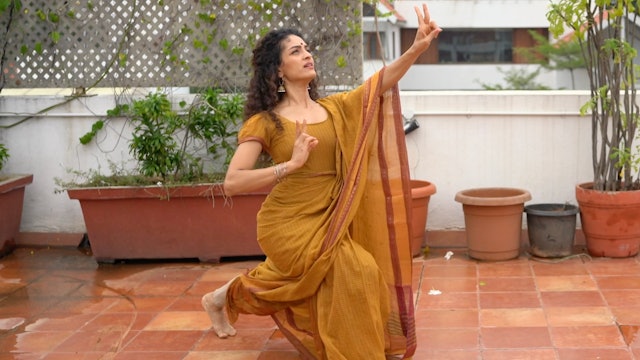 03:27Episode 10
03:27Episode 10Kartharee Adavu 4: Instructions
Episode 10
The Kartharee adavu is a movement that begins with a jump, followed by the crossing of the legs. The name could come from the hasta that is used or from the fact that the legs cross.
The Last kartharee adavu uses a big jump to land with the legs crossed.
The arms move in a complete mandala, cir...
-
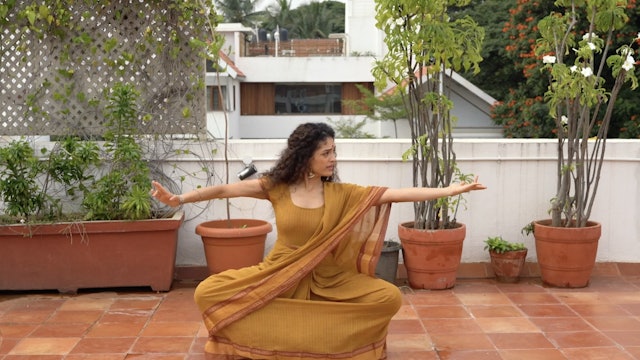 02:47Episode 20
02:47Episode 20Mandi Adavu : Instructions
Episode 20
The Mandi adavu is named such because there is a small jump on the balls of the feet after which the knee is placed on the ground.
Things to remember:
- stay lifted as much as possible without sitting on the heels
- keep pushing the thighs back and the heels forward to keep your muscles engaged... -
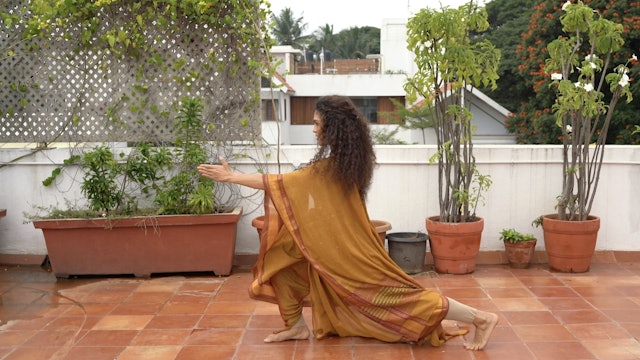 04:25Episode 21
04:25Episode 21Serikal Adavu Variations : Instructions
Episode 21
"Serikal", means to slide. This series of Adavus include a variety of sliding movements in the Adavu series of The Raadha Kalpa Method. The first variety is introduced in this series. Technically 'Jaaru' and 'Serikal' mean the same thing, but we will call this second series of sliding Adavus as '...
-
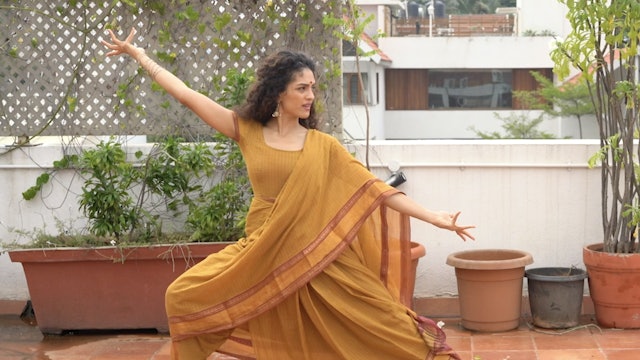 02:28Episode 10
02:28Episode 10Serikal Adavu Variation 2 : Instructions
Episode 10
"Serikal", means to slide. This series of Adavus include a variety of sliding movements in the Adavu series of The Raadha Kalpa Method. The first variety is introduced in this series. Technically 'Jaaru' and 'Serikal' mean the same thing, but we will call this second series of sliding Adavus as '...
